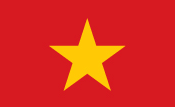Travel Across Vietnam’s Three Regions – A Journey from North to South
Traveling across Vietnam’s three regions will take you on an unforgettable journey through every corner of this beautiful S-shaped country. From North to South, Vietnam has long been known as a land blessed with rich nature — from endless golden rice fields to majestic mountain ranges touching the sky, from pristine white-sand beaches to peaceful winding rivers.
Each region carries its own unique colors and charm, all blending together to form a magnificent natural painting full of life and emotion. But Vietnam’s beauty lies not only in its landscapes — hidden within them are deep cultural values that shape a harmonious and distinctive identity found nowhere else.
1. Central Vietnam – The Land of Sun, Wind, and the Sea
Central Vietnam is where multiple cultures meet, a land rich with historical imprints. From the ancient pagodas of Hue to the bustling ancient streets of Hoi An and the traditional craft villages scattered throughout the region — this land is a living museum of culture and heritage.
Here, travelers can immerse themselves in the vibrant cultural atmosphere and savor the unique local cuisine that makes Central Vietnam so unforgettable.
1.1 Phong Nha – Ke Bang, Quang Binh
Visiting Phong Nha – Ke Bang, you’ll feel as if you’ve stepped into a fairytale world. Known as the “Kingdom of Caves,” each cave here is a masterpiece of nature, shaped over millions of years.
The colorful stalactites and stalagmites create breathtaking scenes as beams of sunlight slip through rock crevices, reflecting on the emerald water below. Towering limestone mountains rise majestically, forming an awe-inspiring landscape that humbles anyone who visits.
In the tranquil air, you can hear the dripping of water from ancient stalactites, the chirping of birds, and the whisper of the wind through the rocks — all harmonizing into a natural symphony that leaves a lasting impression on every visitor.
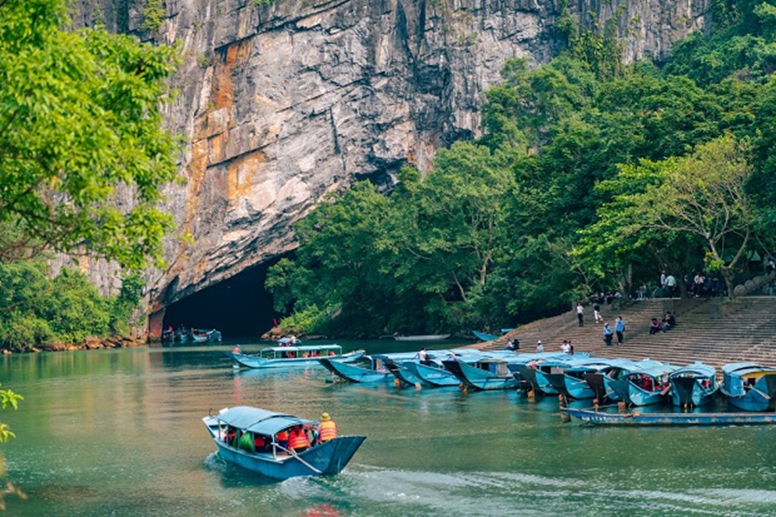
(Phong Nha – Ke Bang Cave, Quang Binh – Source: Internet)
1.2 Hoi An Ancient Town, Quang Nam
Hoi An Ancient Town — often called “the gem of Central Vietnam” — captivates travelers with its poetic, nostalgic charm. Recognized by UNESCO as a World Cultural Heritage Site, it’s one of the must-visit destinations in the region.
Hoi An enchants visitors with its unique architecture, ancient houses, narrow streets, and colorful lanterns that light up every night. Under the soft morning sunlight, each building glows with a golden hue, painting a tranquil and romantic scene.
As dusk falls, a gentle boat ride along the Hoai River offers a serene view of the lantern-lit town, evoking a bittersweet sense of nostalgia.
Hoi An is peaceful yet irresistibly captivating — a town that stays in your heart long after you leave.
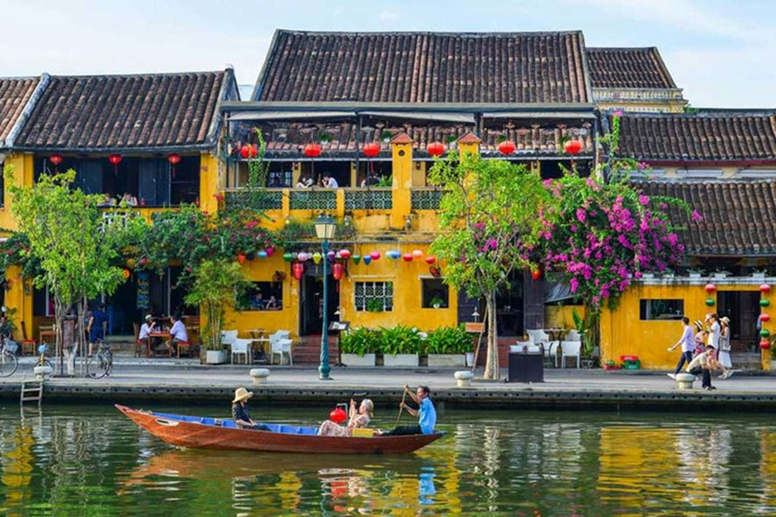
(Hoi An Ancient Town, Quang Nam – Source: Internet)
1.3 The Imperial City of Hue
“This afternoon rain falls on Hue’s streets,
A wanderer’s heart with no place to rest,
Yet why does the rain keep falling still —
As if it misses someone?”
Hue, Vietnam’s former imperial capital, is a place of quiet charm and poetic grace. The Imperial City of Hue stands as one of Vietnam’s most iconic historical sites, recognized by UNESCO as a World Cultural Heritage Site.
Once home to the Nguyen Dynasty emperors, this grand complex reflects both regal solemnity and the timeless beauty of Vietnamese culture. Set beside the romantic Perfume River, the Imperial City radiates a calm, almost dreamlike dignity that softens its majestic presence.

(The Imperial City of Hue – Source: Internet)
2. Northern Vietnam – The Land of Majestic Natural Beauty
Northern Vietnam is where all four seasons unfold vividly throughout the year. Each season brings its own colors and moods — spring’s freshness, summer’s vibrance, autumn’s romance, and winter’s quiet charm.
The North’s landscapes are as diverse as its culture, offering travelers countless unforgettable experiences.
2.1 Hanoi – The Capital of a Thousand Years
Hanoi, the capital city of Vietnam, is not only the country’s political heart but also a place steeped in history and culture. With its tree-lined streets, ancient temples, serene lakes, and delicious local dishes, Hanoi never fails to charm its visitors.
A visit here would be incomplete without paying respects at President Ho Chi Minh’s Mausoleum, where the great leader of the Vietnamese people rests in peace.
Take a leisurely stroll around Hoan Kiem Lake, also known as “the Jade of the Capital,” tied to the legend of the Sword and the Turtle. Amidst the bustling city, this tranquil lake offers a breath of calm and reflection.
The Old Quarter with its 36 historic streets is a treasure trove of traditional crafts and local delicacies. Every corner of Hanoi tells a story — one of resilience, beauty, and heritage.
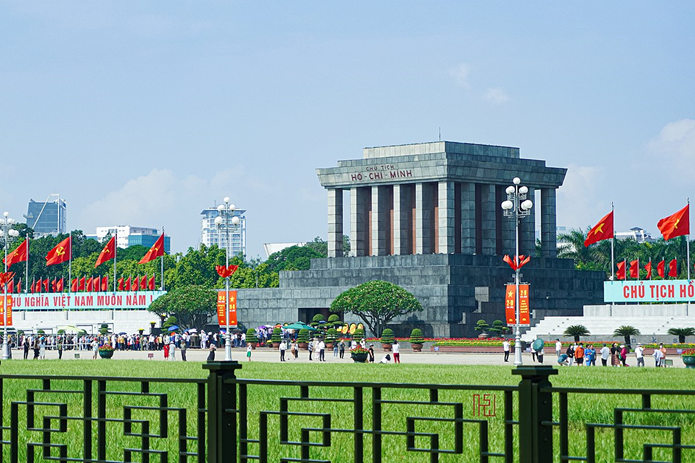
(Ho Chi Minh Mausoleum & Hoan Kiem Lake – Source: Internet)
2.2 Sapa – Lao Cai
Nestled in the Hoang Lien Son Mountain Range, Sapa is where nature and humanity harmonize perfectly. Famous for its terraced rice fields glistening under the morning sun, Sapa is a dream for nature lovers and photographers alike.
Here, you can visit the unique Love Market, or challenge yourself to conquer Fansipan Peak, the highest mountain in Indochina. Surrounded by lavender fields and mountain mist, Sapa offers a romantic escape — a perfect blend of adventure and tranquility.

(Sapa in the Harvest Season – Source: Internet)
2.3 Ha Long Bay – Quang Ninh
A true wonder of the world, Ha Long Bay is nature’s masterpiece — where thousands of limestone karsts rise dramatically from emerald waters. Each island carries its own shape and story, together forming an awe-inspiring panorama that has earned Ha Long Bay its title as a UNESCO World Heritage Site.
The harmony between sky, sea, and stone creates a scene so beautiful it feels otherworldly — a place where every traveler finds peace and wonder.
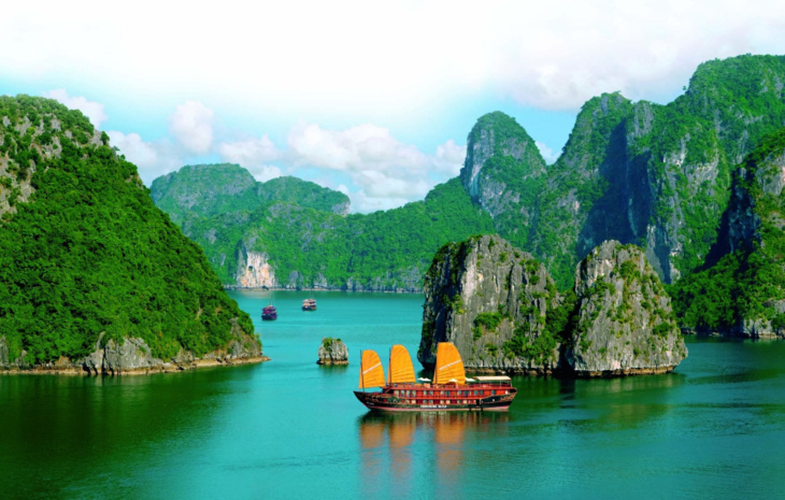
(Ha Long Bay – Source: Internet)
3. Southern Vietnam – The Land of Sunshine and Rivers
3.1 Can Tho – The Capital of the Mekong Delta
“Cần Thơ – rice white, water clear,
Whoever comes here never wants to leave.”
Known as the heart of the Mekong Delta, Can Tho is a city that beautifully blends modernity with traditional river culture.
Two experiences you shouldn’t miss:
- Take a boat tour of Cai Rang Floating Market at dawn to witness the lively trading scene unique to the Mekong region.
- Visit My Khanh Tourist Village, where you can experience authentic local life — from traditional folk games to activities like fishing in canals and making local dishes.
-
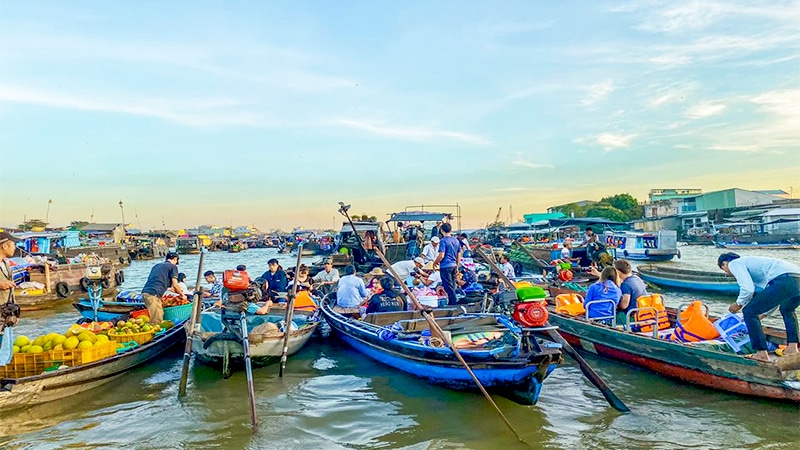
(Cai Rang Floating Market & My Khanh Tourist Village – Source: Internet)
3.2 Sa Dec Flower Village – The Flower Kingdom of the South
Located along the Tien River in Dong Thap Province, Sa Dec Flower Village is known as the “flower capital of the Mekong Delta.”
Here, hundreds of flower species bloom in vibrant colors, creating a breathtaking scene — especially during the Lunar New Year season when the village becomes alive with festive energy.
During other times of the year, Sa Dec exudes a calm, rustic charm — a peaceful oasis away from the bustling cities.
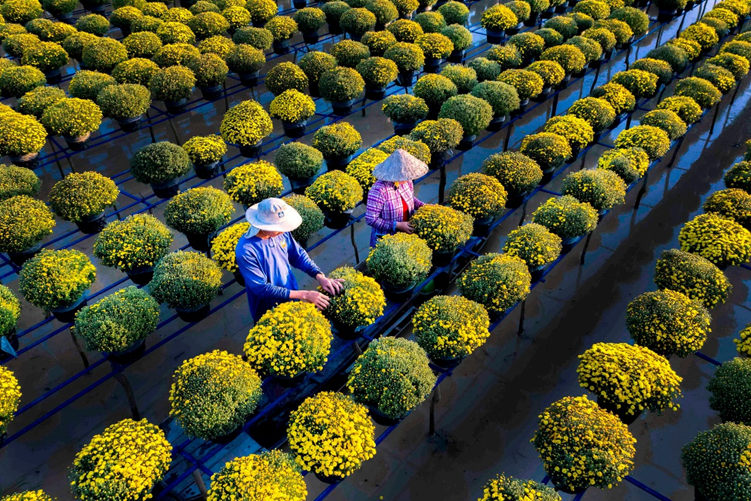
(Sa Dec Flower Fields – Source: Internet)
3.3 Ta Pa Lake and Pagoda – The “Western Heaven’s Gate”
In An Giang Province, among green rice fields and sacred mountains, lies Ta Pa Lake — a hidden gem often called the “Fairy Lake of the Mekong Delta.”
Surrounded by towering cliffs, the lake’s crystal-clear waters reflect the sky, creating a magical mirror-like scene. Nearby, Ta Pa Pagoda showcases exquisite Khmer architecture with ornate carvings and vibrant colors.
Here, visitors can relax, take photos, or even try hiking and cave exploring around the area — an ideal destination for those who love peace and adventure.
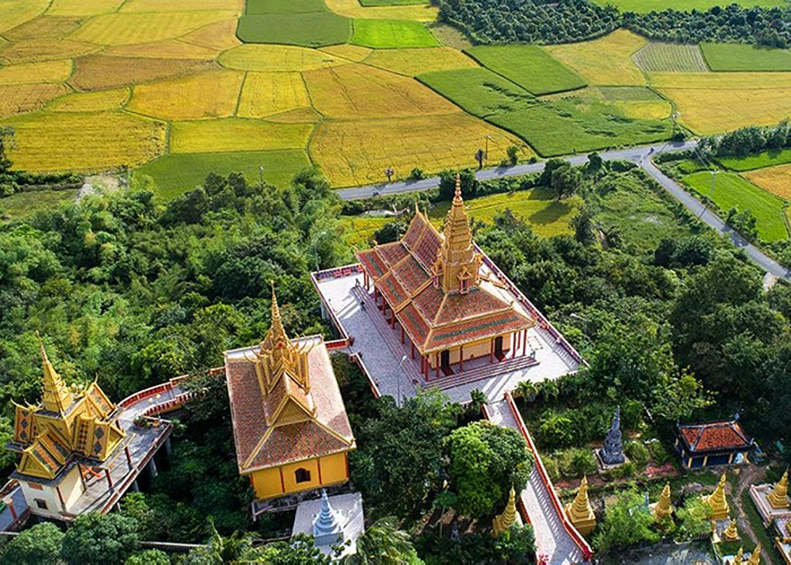
(Ta Pa Pagoda, An Giang – Source: Internet)
Conclusion
Each region of Vietnam brings a new sense of wonder and emotion. Every step you take across this S-shaped land becomes a meaningful journey — one filled with beauty, discovery, and connection.
Traveling across Vietnam’s three regions is not just about sightseeing — it’s about understanding the soul of the country, exploring its rich culture, and uncovering parts of yourself along the way.
So come along, and let’s explore every road, every flavor, and every heartbeat of Vietnam together.
Contact Information
My Khanh Ecotourism Village
📍 Address: 335 Lo Vong Cung Street, My Khanh Commune, Phong Dien District, Can Tho City
📞 Phone: 0292 3 846.260 – 02923 738.738 – 0766.89.39.79
🌐 Website: https://mykhanh.com/
Follow My Khanh Ecotourism Village to stay updated with the latest travel news and special offers for your next trip to Can Tho!
 Competency profile
Competency profile  Travel guide
Travel guide  Collection
Collection  Search
Search  Contact
Contact 
